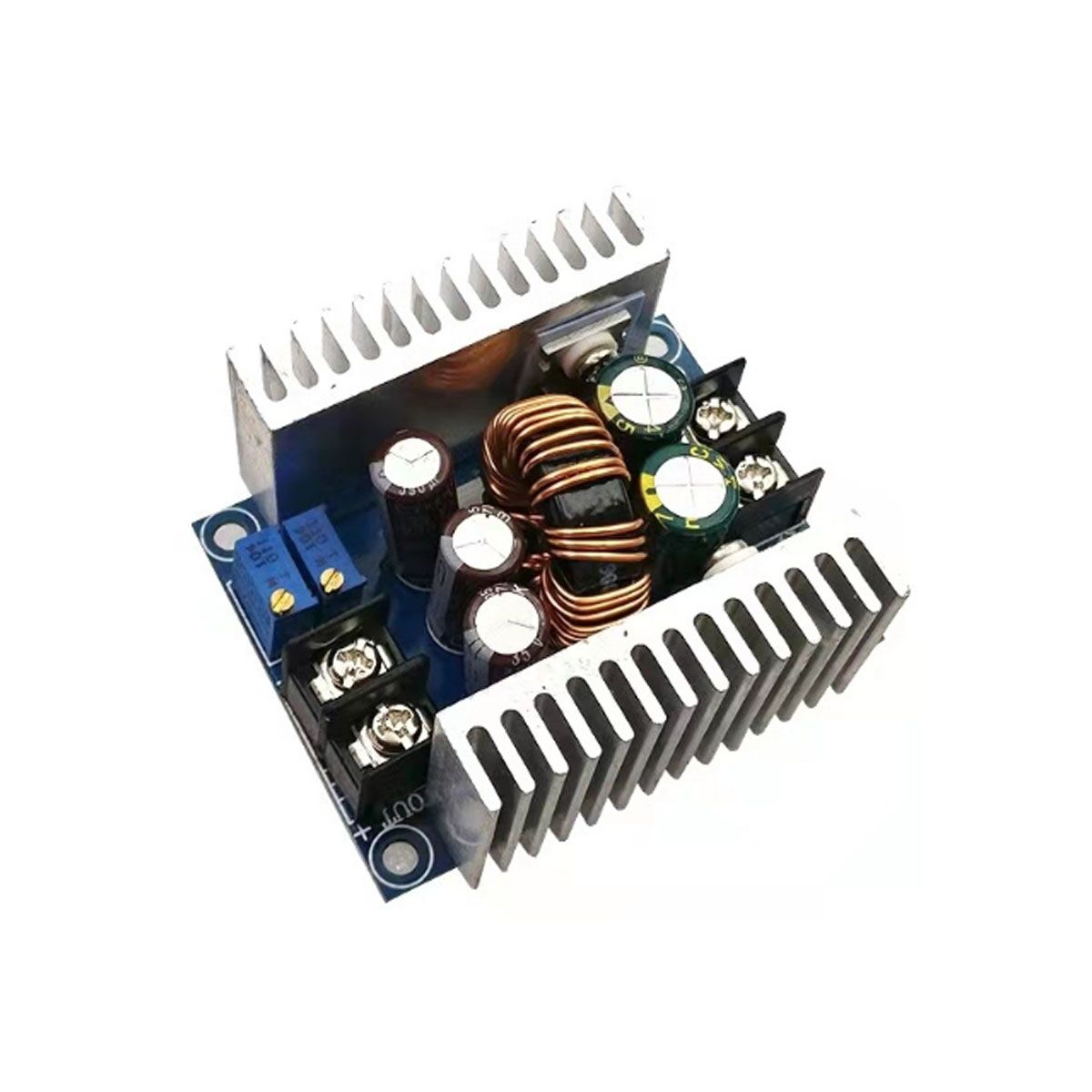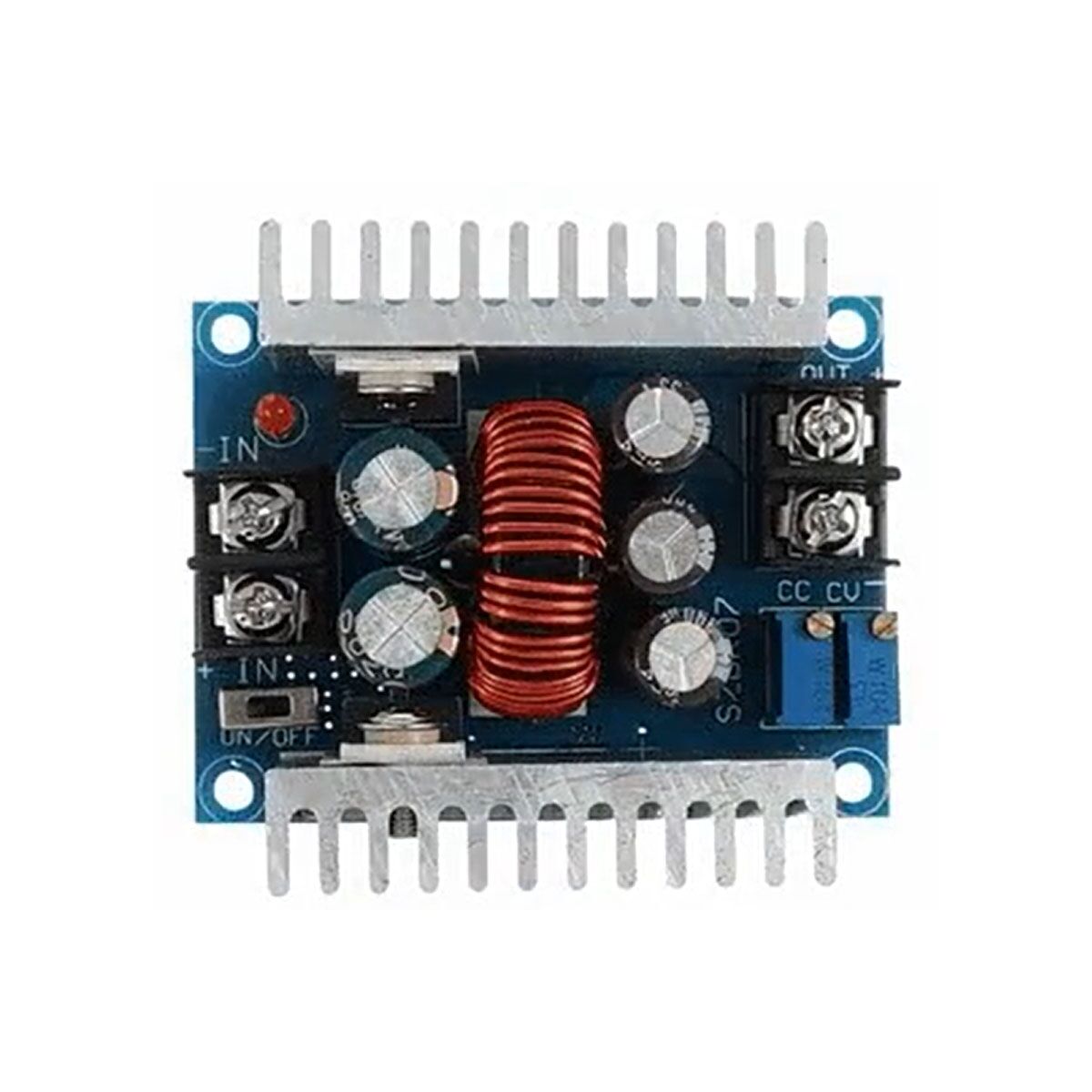300W 20A constant-current adjustable step-down power module
300W 20A constant current adjustable step-down power supply module high current charging module high power LED driver module.
Additional information
| SKU | GA008 |
|---|---|
| MOQ | 1 |
| Availability | In stock |
Product Details:
Introduction to synchronous rectifier technology:
Synchronous rectifier is a new technology which uses special power MOSFET with very low on-state resistance to replace rectifier diode to reduce rectifier loss. It can greatly improve the efficiency of DC/DC converter and there is no dead zone voltage caused by Schottky barrier voltage. Power MOSFET belongs to voltage-controlled device, and its volt-ampere characteristics show a linear relationship when it is turned on. When a power MOSFET is used as a rectifier, the gate voltage must be synchronized with the phase of the rectifier voltage to complete the rectifier function, so it is called synchronous rectifier. The synchronous rectifier technology greatly reduces the rectifier loss at the output of the switching power supply, thus improving the conversion efficiency and reducing the heating of the power supply.
Parameter Description:
Synchronous rectifier non-isolated buck constant current constant voltage module CC CV charging module
Scope of application: high power LED constant current drive, lithium battery charging (including ferroelectric),4V, 6V, 12V, 14V, 24V battery charging, nickel cadmium nickel-metal hydride battery (battery pack) charging, solar panel, wind generator
Input voltage: DC6-40V
Output voltage: continuously adjustable (1.2-35VDC) for a long time below 32V (suitable for applications where the input voltage is higher than the output voltage without voltage boost)
Output current: maximum 20A within 15A for a long time (if the temperature of power tube exceeds 65 degrees, please add fan for heat dissipation, and for high voltage output, please use derating)
Current limiting range: 0.2-20A (adjustable) If the module exceeds 65 degrees, add fans.
Lowest voltage difference: 3V
Operating frequency: 150KHZ
Conversion efficiency: up to approximately 96% efficiency is dependent on differential pressure and operating conditions
Output ripple: ripple around 50mV (without noise) 20 mbit/s bandwidth (for reference only) input 24V
Operating temperature: -10℃ to +75℃) (For actual use, please pay attention to the power tube temperature. If the temperature is too high, please strengthen heat dissipation or derating.)
Potentiometer adjustment direction: clockwise (increase), counterclockwise (decrease)
Output short circuit protection: (instantaneous protection) constant current (the current constant current value can not be short circuit for a long time)
Input reverse connection protection: None,
Output anti-reverse irrigation: none, for load with electrical or inductive load need to add 2 pole tube!
Wiring mode: wiring terminal
Module size: 60*53*30MM
Net weight: about 85g
Output current regulation method:
1. Adjust CV potentiometer, according to your load requirements, set the output voltage to the voltage value you need.
2 counterclockwise set CC potentiometer 30 laps or so, (that is, set the output current to the minimum), connected to the LED, adjust CC potentiometer to the current you need. For battery charging, put the battery after the power, and then receive the output, adjust CC to the current you need, (for charging must be put out of the battery to adjust the accurate, because the battery left in the amount of electricity, the smaller the charging current.)
Wiring instructions:
OUT+ : positive output
OUT- : negative output
+IN: Positive input
-in: Enters a negative number
CV: Output voltage regulation
CC: output current regulation
EN: Enable, low level off output; Pause. High voltage level active
When input and output are grounded, no-load CV outputs constant voltage and CC outputs constant current

